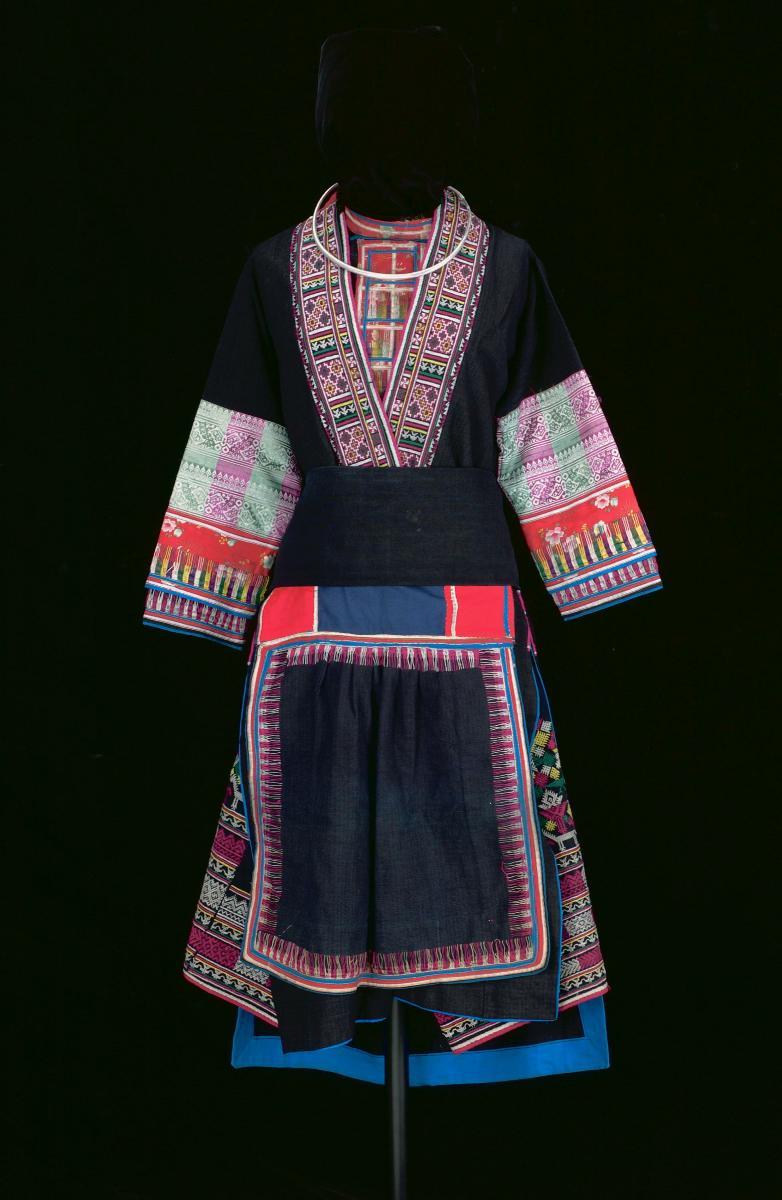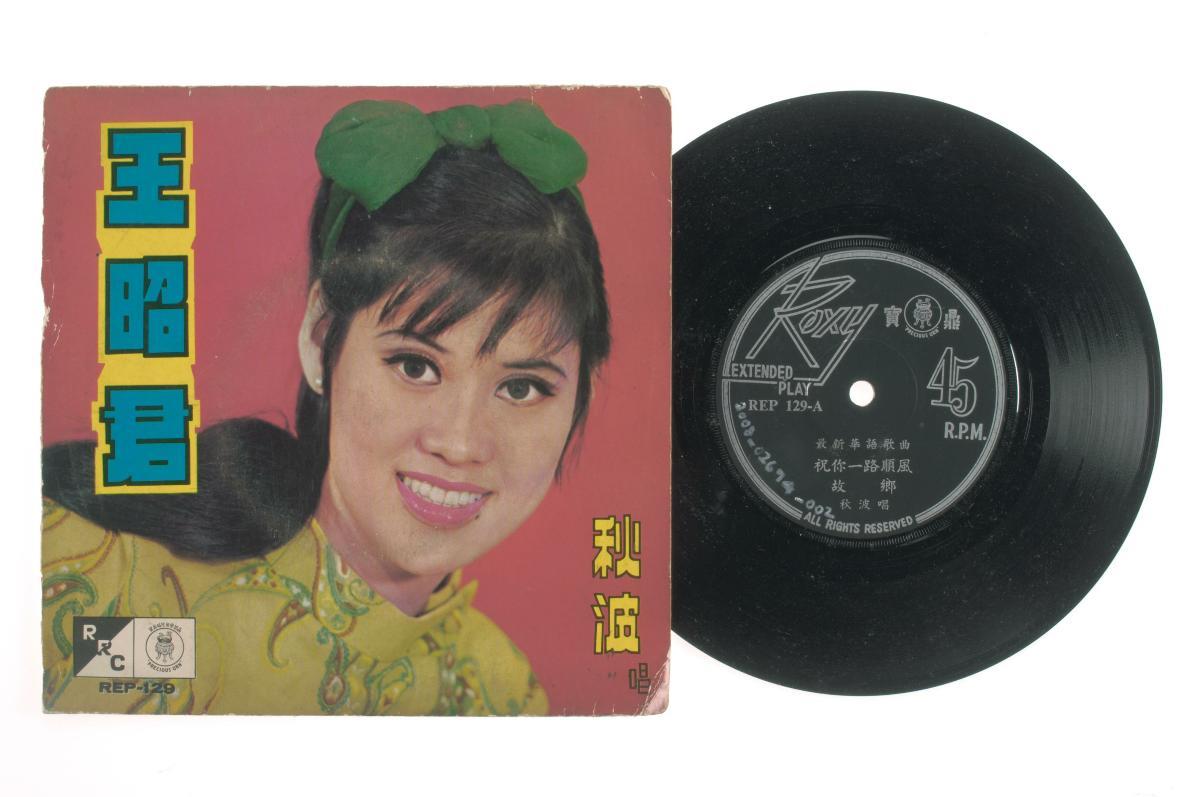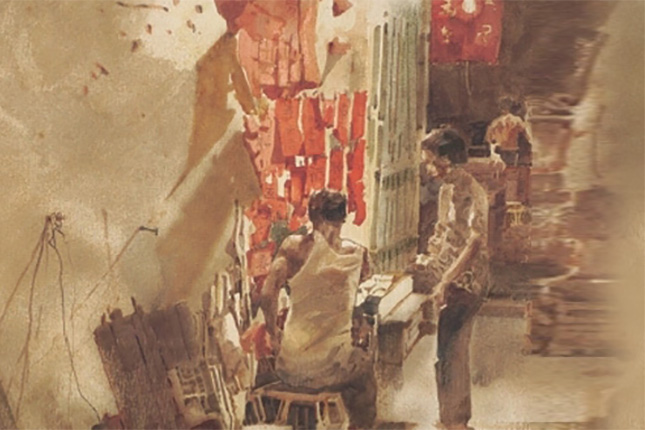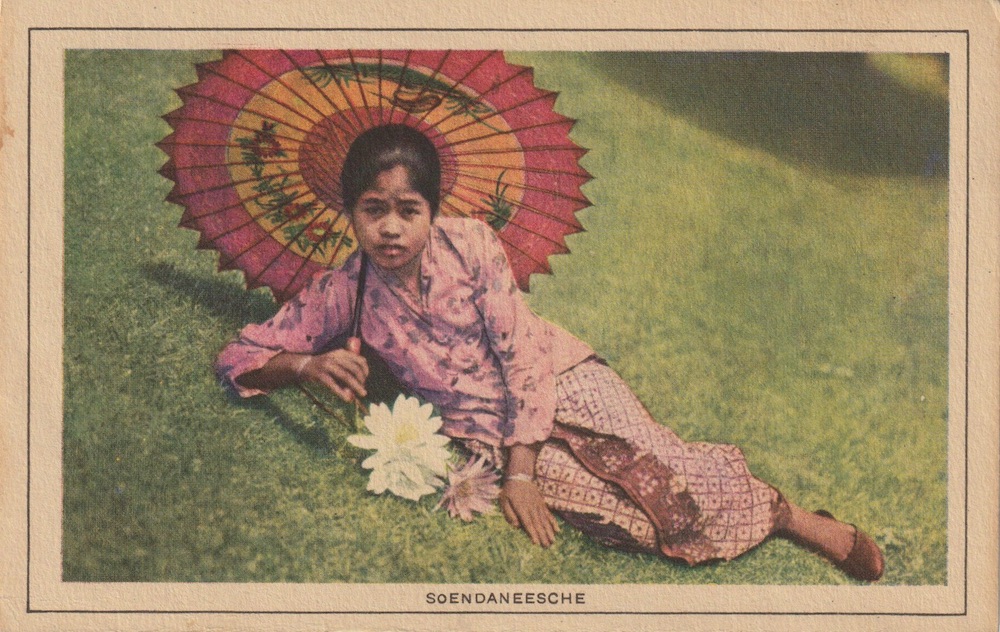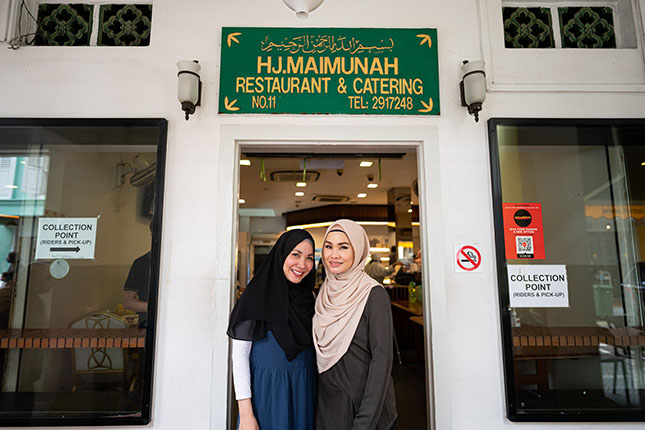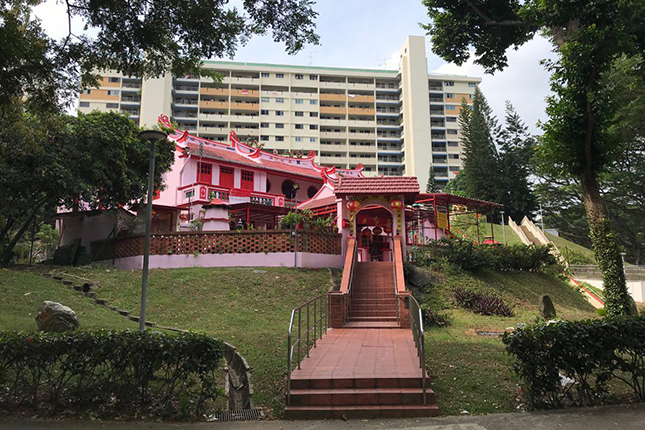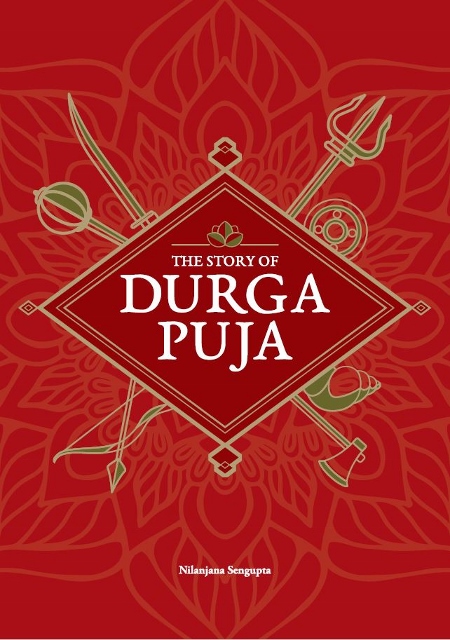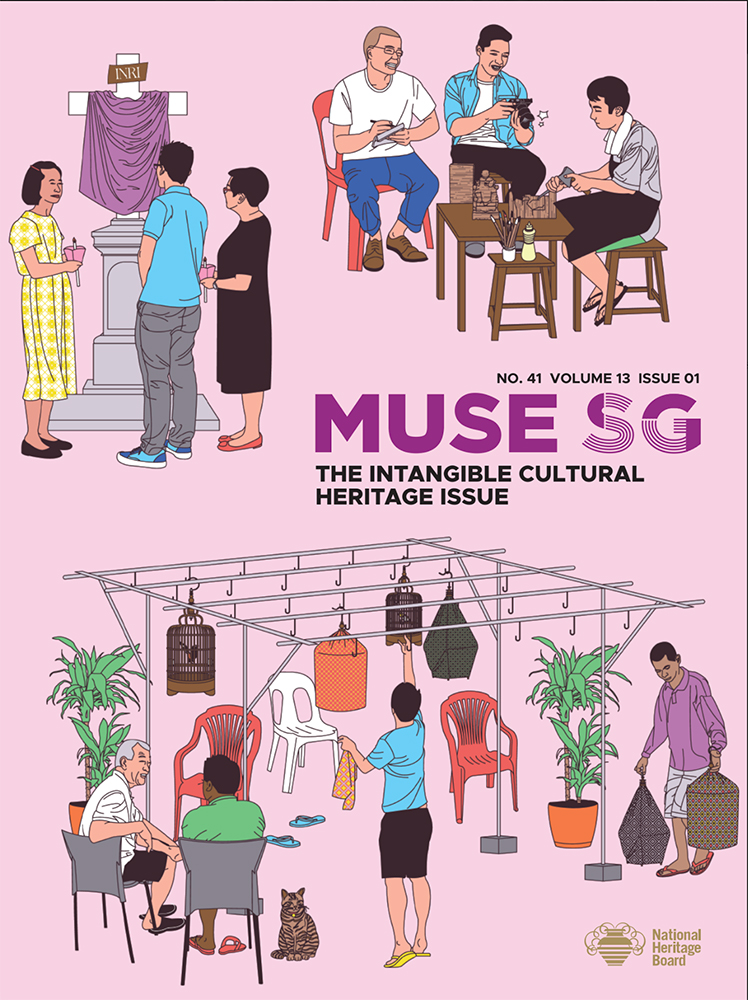Birthing Traditions
Birthing traditions involve practices performed during prenatal, labour, and postnatal periods. In various communities, it is believed that prenatal practices can have an impact on the process of labour and delivery. The postnatal period is for a woman to recover from childbirth; hence specific rituals are observed to ensure recovery and prevent ill health in later years. The restoration of maternal health is important and practices are undertaken in the belief that they protect the woman from future illnesses.
In multicultural Singapore, women continue to observe a set of practices before and after childbirth. The Chinese, Indians and Malays have their own customs and practices. While each community has its own distinct practices relating to birthing traditions, there are some common practices that these communities share. These practices mostly revolve around helping the mother stay healthy before birth and remain in good health after childbirth.
Geographic Location
The practices observed by the Chinese, Malay and Indian communities in Singapore originate from the places where migrants to Singapore were from. In places over the world where there are these diaspora communities, some of these birthing traditions are still observed by the respective communities. In Singapore, practices related to birthing traditions usually take place within homes.
Communities Involved
Across various communities in Singapore, confinement nannies are commonly engaged to help in taking care of the new mothers, cooking special meals, and in providing massages and bathing the infants.
For the Chinese community in Singapore, most Chinese confinement nannies get their assignments through personal referrals or employment agencies. In recent years, mothers from other ethnic communities such as Japanese and Caucasian have also engaged Chinese confinement nannies.
For postnatal services associated with Malays, such as postnatal massages and use of the bengkung (traditional wrap), they are in high demand not just by Malay women but also by non-Malay women in Singapore.
Within the Indian communities in Singapore, though there are common beliefs and practices regarding birthing traditions, there are also variations across the diverse sub-ethnic and language communities. For example, for the Tamil community in Singapore, prayers to Sri Periyachi Amman, a deity believed to be the protector of infants, are conducted at Sri Mariamman Temple, Sri Veeramakaliamman Temple, Sri Vairavimada Kaliamman Temple, and Sri Vadapathira Kaliamman Temple, where Sri Periyachi Amman can be found with other guardian deities.
Associated Social and Cultural Practices
The traditions related to birthing can be divided into prenatal (or pre-birth) rituals and postnatal (or post-birth) practices.
Prenatal Traditions
There are several beliefs and customs that each community adhere to before childbirth. Pregnant Chinese women are told not to move furniture, use scissors or sew. They are also asked to avoid different food items such as duck heads, pepper, turtle, mutton, jelly and bananas. Instead, they are encouraged to consume tonics, such as shisan taibao tang (十三太保汤), from the fifth month of their pregnancy. The tonic includes herbs like danggui (当归, female ginseng), bai shao (白芍, white peony root) and tu si (吐丝, cuscuta seeds).
Pregnant Indian women are also urged to take care of their diet during pregnancy. She is not given “hot” foods such as spicy dishes during her pregnancy as her body is said to be in an “overheated” state at this time. Besides diet, the valakappu (bangle ceremony) is held in the seventh month of a woman’s first pregnancy. On the day, she dresses as grandly as a bride and sits among gifts presented to her by her family and in-laws, including sarees, her favourite vegetarian food and sweets, as well as bangles on silver trays. Married women then perform a ritual to give their blessings for a safe childbirth. Her husband then performs the rest of the ritual to give his blessings. After the ceremony, the woman moves in with her parents, so that she gets all the comfort she needs during her last trimester.
Pregnant Malay women, on the other hand, are encouraged to read verses of the Quran during their pregnancy. Surah Maryam is read for an easy birth and Surah Yusof is read for beauty and wisdom of the baby. Besides this, Malay women may also adhere to practices that are believed to impact the process of delivery. For example, they avoid sleeping during the day and sitting at the doorstop of their home for fear of having a difficult labour. Some Malays may also carry out a traditional ceremony called lenggang perut (rocking the abdomen). Lenggang perut aims to shift the foetus into the right position, ensuring a smooth delivery. During the ceremony, the pregnant woman lies on seven pieces of sarong of different colours, while the midwife massages the pregnant woman’s stomach. The seven pieces of sarong are pulled out one by one gently from under the pregnant woman in opposite directions, thus creating a rocking movement.
Postnatal Traditions
The Chinese, Malay and Indian communities in Singapore usually observe a confinement period after giving birth, where the mother is not allowed to leave home. This is to protect both the mother and child from contracting infectious diseases and keep them healthy during the critical months. The Chinese observe a 30-day confinement while, the Indians and Malays traditionally have 40 to 44 days of confinement. However, many of new mothers in Singapore now prefer a 30-day confinement as some women have to return to work or run errands.
Childbirth is believed to deplete the mother of heat, blood and air, making her vulnerable to cold, wind and diseases. Hence, precautionary measures are taken to ensure that the mothers are kept warm during the confinement period. Malay and Indian mothers are encouraged to take a warm herbal shower. On the contrary, Chinese mothers have to refrain themselves from washing their hair and showering. They wear long-sleeved clothes, pants and socks, and windows are kept closed to keep the wind out. However, this is often not viable in Singapore due to the hot and humid weather.
Food is also a way to keep mothers warm. All three communities enforce a strict diet during confinement. “Cold” and “windy” food such as fruit juices, cucumbers, cabbage and eggplants are avoided. Instead, consuming “hot” foods such as garlic and ginger are encouraged. Food that improve production of breastmilk, such as fish soup boiled with papaya, is also consumed. The Chinese commonly consume foods with with vinegar, ginger, chicken, pig trotters, pig liver, chicken, Chinese herbs, and Chinese wine. These foods are meant to help mothers recover from blood loss during delivery and expel blood clots. The Malays are encouraged to consume a special drink called jamu which is an herbal medicine.
Besides this, Malay mothers also undergo postnatal massages, for three consecutive days, after they have given birth. These massages are said to lower blood pressure and improve blood circulation, which increases oxygen supply and aids in eliminating toxins from the mother’s body. The improved blood circulation also reduces headaches and migraines, helping the mothers sleep. Sengkak (uterus massage) may also be carried out to restore uterus to its original position as pregnancy and labour causes it to sag or slip from its normal position. Bengkung (traditional wrap) is also an important part of the confinement period. Malay mothers would wrap their abdomen and back. The bengkung is believed to help flatten their tummy, reduce weight and tone the body, protect the internal organs and reduce the swelling of organs. It is also believed to tighten the abdomen, and promote good posture that will aid in breastfeeding, break down fat and cellulite and prevents overeating. Before wrapping the bengkung, the leaves of galangal or pandan are included and oil, herbs and spices are rubbed on the mother’s abdomen and back.
Besides the practice of confinement, each community also has their own rituals and celebrations that they conduct after childbirth. Traditionally, the head of a Chinese new-born must be shaved at birth. However, most parents opt not to do so as hair forms a protective layer on the baby’s head. The Chinese also hold the belief that a baby should not be brought out of the house during his/her first month as this might anger the spirits residing in the homes of the other families. At the end of this first month, a feast is usually organised with gifts of hard-boiled eggs dyed red, cakes, glutinous rice and chicken shared with relatives and friends. The eggs symbolise the circle of life and their rounded shapes represents harmony and togetherness.
Indian mothers are not allowed to enter the prayer room in her home until her child is 31 days old. She is considered to be theetu (unclean) as she may still be bleeding. On the 31st day, the house and prayer room are thoroughly cleaned and the lamp in the prayer room is lit. The family will then go to the temple to offer prayers. The Tamil community will also offer prayers to Sri Periyachi Amman when the child is either 16 days old or 30 days old. Only women take part in this ceremony in which a non-vegetable padayal (food offering) is made to the deity in the room, where the mother and child sleeps.
In the Malay community, the azaan (call to prayer) is recited in the baby’s right ear and the qamat (second call to prayer) is recited in the left ear. This is done by the baby’s father, immediately after birth. The placenta is collected and buried after it has been cleaned. To celebrate the newborn’s arrival, a kenduri (ceremonial feast) is held alongside the customary ritual of cukur rambut (shaving of newborn’s hair). Parents are encouraged to donate the weight of hair in gold or monetary equivalent to charity and this is traditionally done on the seventh day after the baby’s birth or later. Besides the cukur rambut ceremony, tahnik and aqiqah may also be carried out together. Tahnik is the application of honey into the child’s mouth at the ceremony for the first shaving of the baby’s hair. The aqiqah is the sacrifice of an animal on the occasion of a child's birth, and it is traditionally performed by parents or guardians of the child. These services are now usually provided by Muslim professionals, including religious teachers, instead of being organised by the family or community. One reason is the relative loss of knowledge by younger parents, or when their own family members are not able to assist in the preparations.
Experience of Practitioners
Ms Winnie Chan, who works at PEM Nanny Employment Agency, picked up skills related to Chinese birth and confinement traditions as part of her work. She notes that there are some differences in the practices and recommended foods for new mothers between the Chinese dialect groups, and also between the Chinese diaspora in different countries. For example, the Cantonese give braised pig trotters to relatives after the 12th day of confinement in Ipoh, Malaysia; while this practice does not seem to be prevalent in the Singapore Chinese community.
Madam Rajeshwari Govindasamy is a homemaker who has knowledge of Indian birthing practices and rituals. She learned all this from watching her mother perform and lead the rituals and practices. She thinks it is important to preserve these traditions because not only are they an extension of her culture, but they also safeguard the health of the mother and child and protect them from bad spirits.
Madam Liza Binti Abas is a bidan (midwife), and her late mother and her grandmother were also bidan (midwives). She identifies strongly with the tradition, and believe that these are important as knowledge that has been passed down and applied for thousands of years. However, the right knowledge is important in ensuring safe practice. She hopes that Malay postnatal treatments can benefit people beyond the Malay community, as a way to also ensure continued transmission of the practice.
The practitioners all note that traditional childbirth practices are still carried out by a significant proportion of mothers in Singapore. However, not all practices are practiced equally and some are at risk. Singaporean mothers are also becoming less strict in following such practices due to the demands of modern life.
Present Status
The transmission of birthing traditions relies heavily on the families and the knowledge that they pass down from generation to generation. While some traditional practices are not always adhered to, it has been observed that new mothers in all three communities tend to follow the recommendations on food during pregnancy and confinement. Certain rituals such as the valakappu by the Tamil community, the first-month celebrations for newborns practiced by the Chinese and cukur rambut, thanik and aqiqah by the Malays are also still carried out today.
The demand for confinement nannies among the Chinese community is also very strong and there have been efforts to try and train more women for the role, to bring the benefits of traditional birthing practices to new mothers.
References
Reference No.: ICH-080
Date of Inclusion: October 2019
References
Chen Quin Hui. “The Changing Tradition of Chinese Confinement in Singapore: Food, Folklore and the Family”. Dissertation for partial fulfilment of Degree of Bachelor of Arts in Sociology, Nanyang Technological University, 2010.
Doris Fok, Yap Seng Chong. "A Comparison Of Practices During The Confinement Period Among Chinese, Malay, And Indian Mothers In Singapore", Pubmed Central (PMC), 2016. https://www.ncbi.nlm.nih.gov/pmc/articles/PMC4992357/. Accessed 22 Sept 2018.
E, Naser et al. "An Exploratory Study Of Traditional Birthing Practices Of Chinese, Malay And Indian Women In Singapore.", Midwifery, 28 (6): e865-e71, 2012.
Lee, Jen-der. “Childbirth in Early Imperial China”. In Angela Leung Ki Che (ed), Medicine for Women in Imperial China. Boston, Leiden: Brill, 2006.
LW, Chen et al. "Dietary Changes During Pregnancy And The Postpartum Period In Singaporean Chinese, Malay And Indian Women: The GUSTO Birth Cohort Study. - Pubmed - NCBI", Ncbi.Nlm.Nih.Gov, 2014. https://www.ncbi.nlm.nih.gov/pubmed/23806144. Accessed 22 Sept 2018.
Mohd Nawawi, Norwina. Cultural Dimensions of Birthing Spaces in Malaysian Public Healthcare System: Malay-Muslim Practices. Gombak: International Islamic University Malaysia. PhD thesis, 2015.
Nadirah Norruddin. “Magic or Medicine? Malay Healing Practices”, Biblioasia, National Library Board, Singapore, 2018 http://www.nlb.gov.sg/biblioasia/2018/10/16/magic-or-medicine-malay-healing-practices/. Accessed August 2019.
Naser, Eliana. Traditional Birthing Practice in a Multi-Cultural Society: Effects on Women’s Sense of Well-being, Support and Breastfeeding Self-Efficacy. Alice Lee Centre For Nursing Studies, National University of Singapore. PhD thesis, 2012. http://scholarbank.nus.edu.sg/handle/10635/43463. Accessed August 2019.









